HOW TO MAXIMIZE THE LIFE OF A GOLF CART BATTERY

You may not give much thought to your golf cart battery but knowing how to care for it is vital to the performance of your golf cart.
Great golf cart battery life starts with choosing a quality battery, like an Interstate®. It also includes safety, correctly installing and charging the battery and proper battery maintenance.
Golf Cart Battery Safety
When it comes to any battery, safety is always first. Look at the label below for common golf cart battery warning signs.
Battery Do’s and Don’ts
- Wear proper eye, face and hand protection.
- No open flames or smoking around batteries
- Use insulated tools when making battery connections
- Electrolyte is a solution of acid and water, so avoid skin contact. If acid contacts skin or eyes, flush with water immediately for 15 minutes and contact a medical professional.
- Ensure connectors are torqued to the proper specifications.
5/16” Studs or Bolts: 100-120 in. lbs. / 11.3-13.6 N-m
3/8” Studs or Bolts: 120-180 in. lbs. (10-15 ft. pounds) / 13.6-20.3 N-m - Do not lay anything on top of the batteries (wires, cables, tools, etc.)
- Always charge and handle batteries in a well-ventilated area
- Only add distilled or deionized water to your batteries and fill to the appropriate level.
- Never add pre-mixed acid to your batteries.
Golf Cart Battery Connections
Once you’re familiar with the proper safety precautions, donned the appropriate safety gear (gloves and glasses), and removed any jewelry, you’re ready to begin.
6-VOLT SERIES
USING 6-VOLT BATTERIES
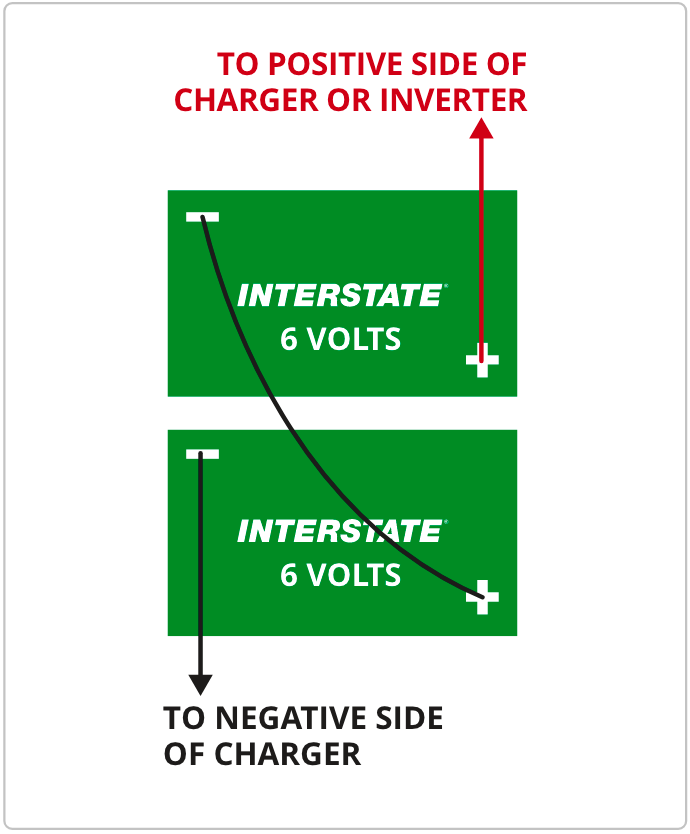
12-VOLT PARALLEL
USING 12-VOLT BATTERIES

12-VOLT SERIES/PARALLEL
USING 6-VOLT BATTERIES
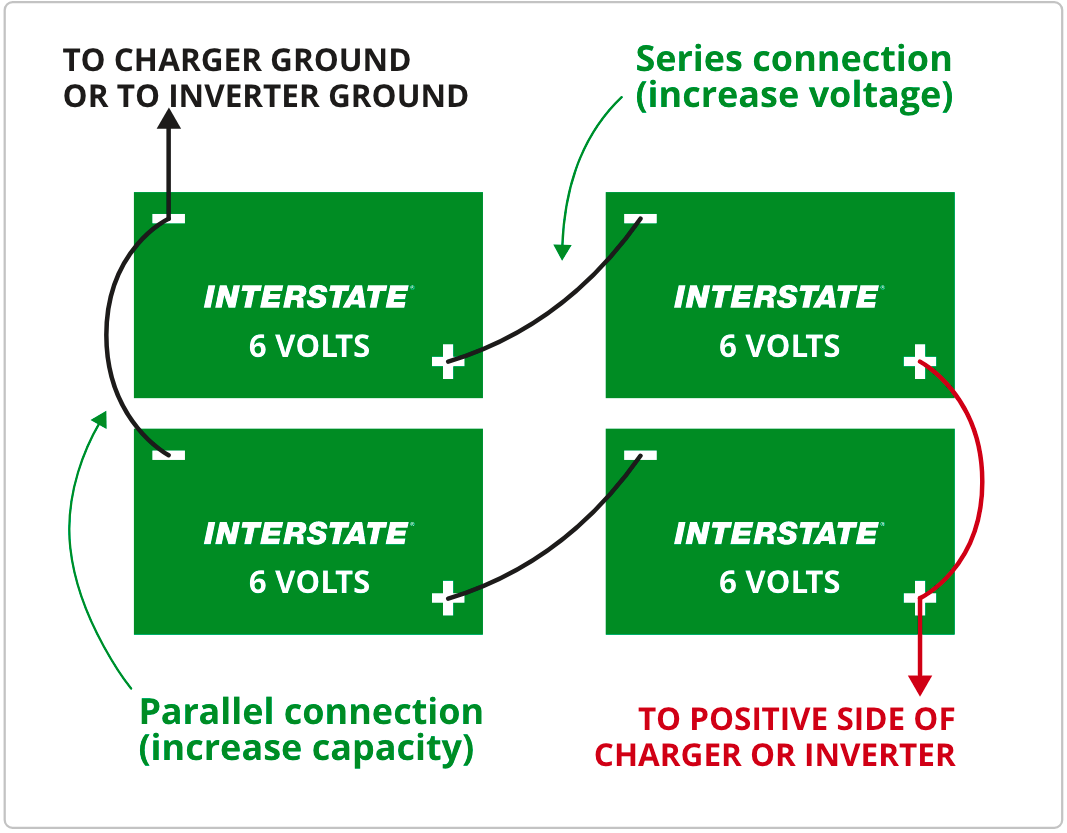
48-VOLT SYSTEM SERIES CONNECTION
USING 6-VOLT BATTERIES

48-VOLT SYSTEM SERIES CONNECTION
USING 8-VOLT BATTERIES
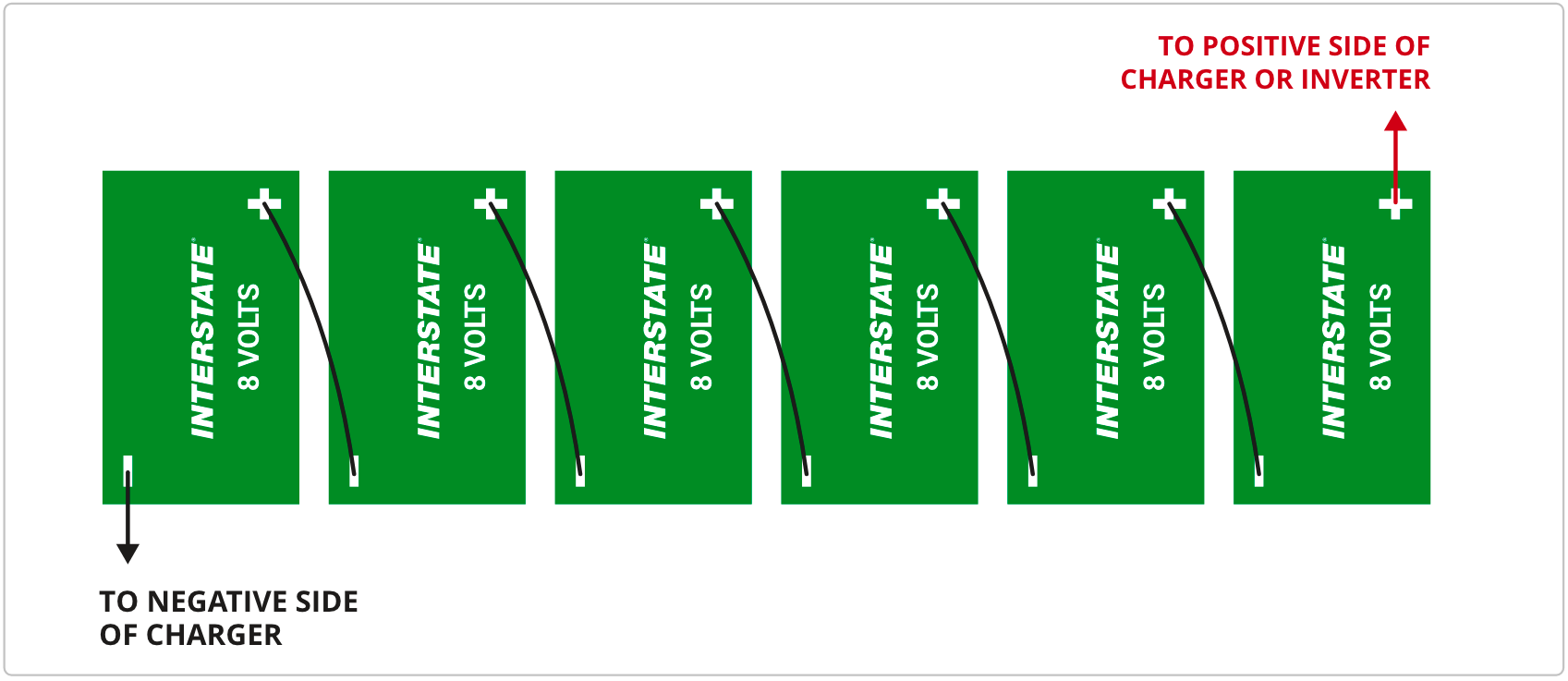
36-VOLT SYSTEM SERIES CONNECTION
USING 6-VOLT BATTERIES
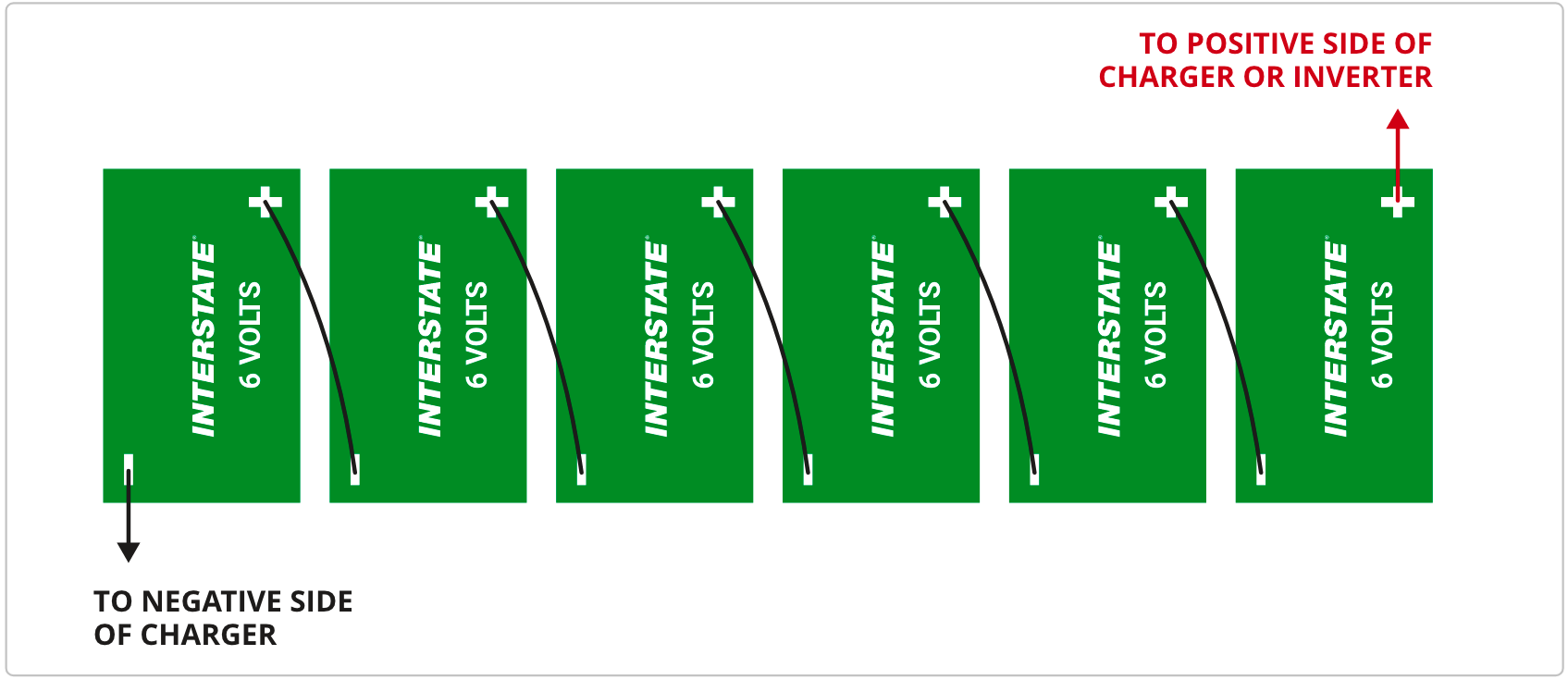
Charging Golf Cart Batteries
When it comes to charging golf cart batteries correctly, it’s best to invest in a quality battery charger and follow the charging parameters below.
| Charging State | Current in Amps | Volts per Cell | 6 Volts | 12 Volts | 24 Volts | 48 Volts |
|---|---|---|---|---|---|---|
| Bulk | 10% to 13% of 20hr Ah Rating | 2.47 | 7.40 | 14.80 | 29.60 | 59.30 |
| Absorption | Taper to 3% of 20 hr Ah Rating and hold for 2-3 hours | 2.47 | 7.40 | 14.80 | 29.60 | 59.30 |
| Float | n/a | 2.25 | 6.75 | 13.5 | 27.00 | 54.00 |
| Equalization | Total time = 2 hours | 2.70 | 8.10 | 16.20 | 31.20 | 62.40 |
Golf Cart Battery Maintenance
It’s also essential to consider torque specifications, temperature compensation, open circuit voltage vs. state of charge and the proper maintenance of water levels.
Torque Specifications & Temperature Compensation
- Terminal Torque specification: 5/16” Stud = 95-105 inch-pounds (not foot-pounds)
- Equalization should be done every 4-6 weeks or if specific gravities have a .010 to .015 difference between cells.
- We recommend using the following: For every 1 degree F below 77º F, add 0.0028 volts per cell or for every 1 degree C below 25º C, add 0.005 volts per cell to the charger voltage setting.
- A 12-volt battery at 70º F. The recommended charging voltage at 77º F is 14.8 volts. The adjusted charging voltage is 14.8 + (6 cells x 7 degrees below x 0.0028) = 14.92 volts.
- A 12-volt battery at 21º C. The recommended charging voltage at 25º C is 14.8 volts. The adjusted charging voltage is 14.8 + (6 cells x 4 degrees below x 0.005) = 14.92 volts.
- For every 1 degree F above 77º F subtract 0.0028 volts per cell or for every 1 degree C above 25º C subtract 0.005 volts per cell to the charger voltage setting.
- A 12-volt battery at 85º F. The recommended charger voltage at 77º F is 14.8 volts. The adjusted charging voltage is 14.8 – (6 cells x 8 degrees above x 0.0028) = 14.67 volts.
- A 12-volt battery at 29.5º C. The recommended charger voltage at 25º C is 14.8 volts. The adjusted charging voltage is 14.8 – (6 cells x 4.5 degrees above x 0.005) = 14.67 volts.
| Static State of Charge |
Acid Specific Gravities | 12 Volts | 6 Volts | 8 Volts |
|---|---|---|---|---|
| 100% | 1.300 | 12.84 | 6.42 | 8.64 |
| 90% | 1.282 | 12.73 | 6.36 | 8.48 |
| 80% | 1.268 | 12.65 | 6.32 | 8.40 |
| 70% | 1.255 | 12.57 | 6.28 | 8.36 |
| 60% | 1.242 | 12.49 | 6.24 | 8.32 |
| 50% | 1.228 | 12.41 | 6.20 | 8.24 |
| 40% | 1.215 | 12.33 | 6.16 | 8.20 |
| 30% | 1.202 | 12.25 | 6.12 | 8.16 |
| 20% | 1.188 | 12.17 | 6.08 | 8.08 |
| 10% | 1.175 | 12.09 | 6.04 | 8.04 |
| 0% | 1.162 | 12.01 | 6.00 | 8.00 |
Addition of Water (distilled or deionized)
- Always charge the batteries before you add water.
- Only add water to discharged or partially discharged batteries before charging if the water levels are below the plates.
- Once fully charged, continue with the watering procedure.
- When adding distilled or deionized water, fill to the appropriate level and never overfill.
- After adding water, secure the vent caps back on the batteries.
APPROPRIATE WATER LEVELS
WHEN ADDING DISTILLED OR DEONIZED WATER TO BATTERY CELLS
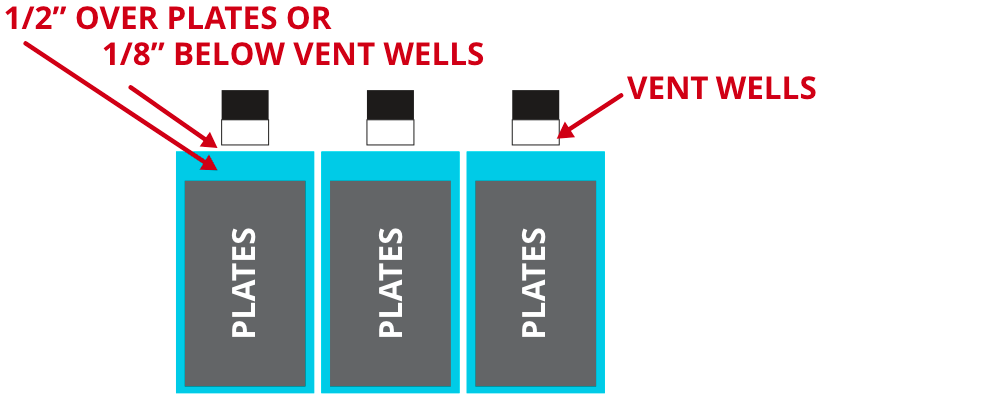
Always keep your golf cart battery and cables clean and free of rust and corrosion. It’s also essential to fully charge your battery before you store it, and always keep it in a cool, dry place to make the most of your battery life.
Find a Location
- Closed
- Contact Store For Hours of Operation

